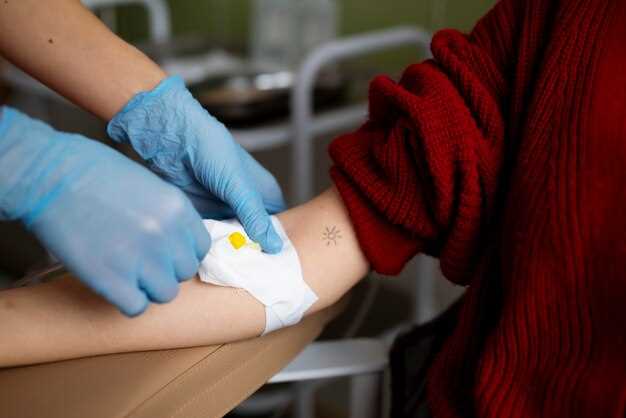
Are you suffering from immune thrombocytopenia? Losartan therapy may provide the relief you need. Immune thrombocytopenia is a condition where your body’s immune system attacks and destroys platelets, leading to a low platelet count. Losartan, a medication primarily used to treat high blood pressure, has shown promise in managing immune thrombocytopenia by balancing the immune response. Consult your healthcare provider to see if losartan therapy is right for you.
Overview of Immune Thrombocytopenia
Immune thrombocytopenia (ITP) is a disorder that results in a low platelet count in the blood. Platelets are essential for blood clotting, and a decrease in their number can lead to increased risk of bleeding and bruising.
Causes of ITP
The exact cause of ITP is not always known, but it is believed to be an autoimmune disorder where the immune system mistakenly attacks and destroys platelets. Other factors, such as infection or certain medications, can also trigger ITP.
Symptoms of ITP
Common symptoms of ITP include easy bruising, nosebleeds, and bleeding gums. In severe cases, bleeding into the skin and internal organs can occur, leading to serious complications.
| Risk Factors for ITP | Losartan Therapy and ITP |
|---|---|
| Age, gender, genetic factors | Possible association |
| Previous viral infections | Further research needed |
Risk Factors for ITP
Immune Thrombocytopenia (ITP) is a condition characterized by low platelet counts due to the immune system attacking and destroying platelets. While the exact cause of ITP is not always clear, there are certain risk factors that may increase the likelihood of developing this condition.
1. Autoimmune Disorders:
People with other autoimmune disorders, such as lupus or rheumatoid arthritis, may be at a higher risk of developing ITP. The immune system dysfunction in these conditions can lead to the destruction of platelets.
2. Infections:
Certain viral infections, such as hepatitis C, HIV, or Helicobacter pylori, have been linked to the development of ITP. These infections can trigger an immune response that targets platelets.
Understanding the risk factors for ITP can help individuals and healthcare providers identify and manage the condition effectively.
Losartan Therapy and ITP
Immune thrombocytopenia (ITP) is a condition characterized by a low platelet count, which can lead to abnormal bleeding. Losartan, an angiotensin receptor blocker commonly used to treat hypertension, has been associated with the development of ITP in some cases.
Losartan therapy has been linked to the onset of ITP, although the exact mechanism is not fully understood. Patients taking losartan should be aware of the potential risk and monitor for symptoms of ITP.
Symptoms of ITP include easy bruising, petechiae (small red or purple spots on the skin), and prolonged bleeding from minor cuts or injuries. If any of these symptoms occur while taking losartan, patients should seek medical attention promptly.
It is essential for healthcare providers and patients to be aware of the potential association between losartan therapy and ITP. Monitoring platelet levels and recognizing symptoms early can help in the timely diagnosis and management of ITP in individuals taking losartan.
Symptoms of ITP
Immune Thrombocytopenia (ITP) can manifest through various symptoms that can range from mild to severe. Some common symptoms include:
1. Easy Bruising
One of the primary signs of ITP is easy bruising, which occurs due to the low platelet count in the blood. Patients may notice bruises on their skin even with minor trauma.
2. Petechiae

Small, red or purple spots on the skin, known as petechiae, can also be a symptom of ITP. These spots occur as a result of bleeding under the skin, often appearing on the legs.
| Severity | Symptoms |
|---|---|
| Mild | – Easy bruising |
| Moderate | – Petechiae |
| Severe | – Excessive bleeding |
It is crucial to monitor these symptoms and seek medical attention if they persist or worsen, as ITP can lead to serious complications.
Detection and Diagnosis

Diagnosing Immune Thrombocytopenia (ITP) involves a thorough evaluation of the patient’s medical history, physical examination, and laboratory tests. The following steps are typically taken to detect and diagnose ITP:
- Medical History: The healthcare provider will inquire about any previous illnesses, medications, or recent infections that could be linked to low platelet levels.
- Physical Examination: The doctor will perform a physical examination to check for signs of bleeding, bruising, or petechiae (small red or purple spots on the skin).
- Complete Blood Count (CBC): A CBC test is used to measure platelet levels and identify any anomalies in the blood cells.
- Additional Blood Tests: Additional tests may be conducted to assess the patient’s overall health and rule out other potential causes of low platelet counts.
- Bone Marrow Examination: In some cases, a bone marrow biopsy may be recommended to evaluate the bone marrow’s ability to produce platelets.
Diagnostic Criteria for ITP
According to the American Society of Hematology guidelines, a diagnosis of ITP can be made if the following criteria are met:
- Isolated thrombocytopenia (platelet count <100,000/μL)
- Absence of other observable causes of thrombocytopenia
- No evidence of a disorder leading to a secondary form of thrombocytopenia
Proper detection and diagnosis of ITP are crucial for initiating appropriate treatment and managing the condition effectively.
Treatment Options
When it comes to treating Immune Thrombocytopenia (ITP) after losartan therapy, there are several options available depending on the severity and individual characteristics of the patient.
- First-Line Therapy: Corticosteroids are often used as the initial treatment to suppress the immune system and increase platelet count.
- Immunosuppressants: Medications like azathioprine or cyclosporine may be prescribed to reduce immune response and prevent platelet destruction.
- Rituximab: This medication targets specific immune cells involved in ITP and can be effective in some cases.
- Thrombopoietin Receptor Agonists: Drugs like romiplostim or eltrombopag stimulate platelet production and can increase platelet levels.
- Splenectomy: In severe cases or when other treatments have not been effective, surgical removal of the spleen may be considered to reduce platelet destruction.
It is important for patients with ITP to work closely with their healthcare providers to determine the most suitable treatment plan based on individual needs and response to therapy.
